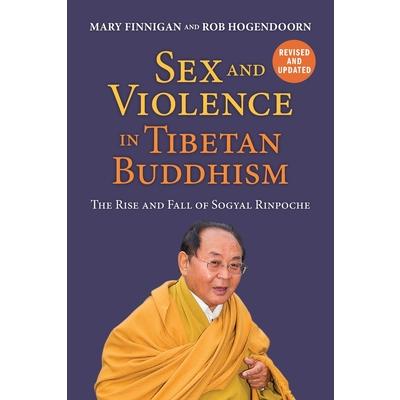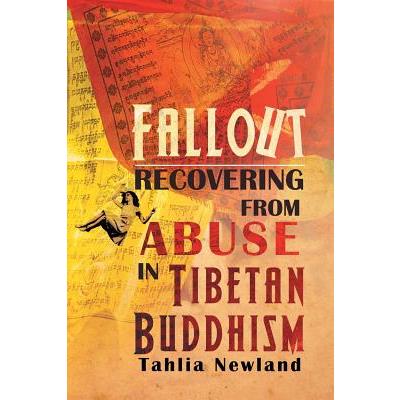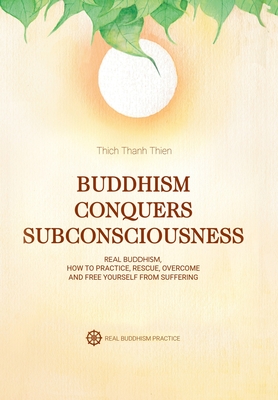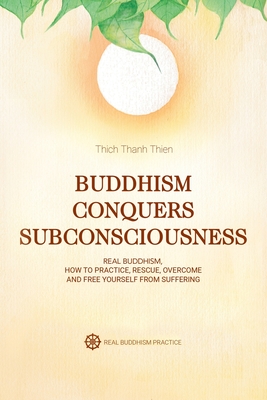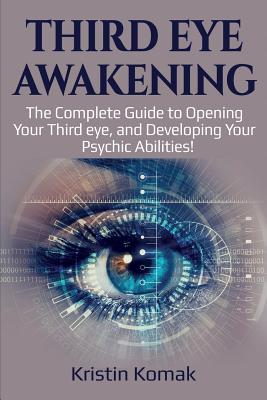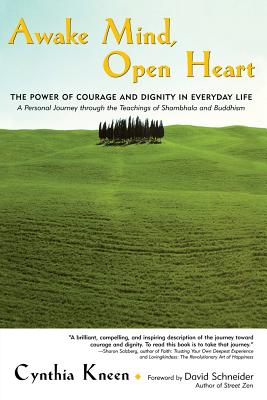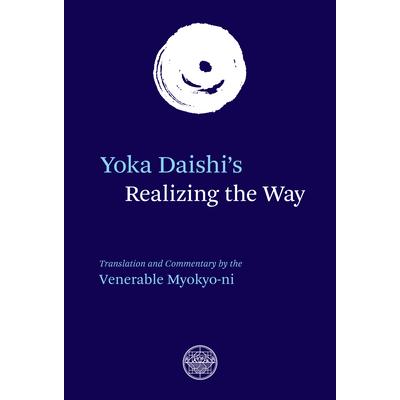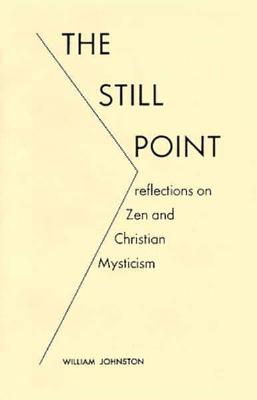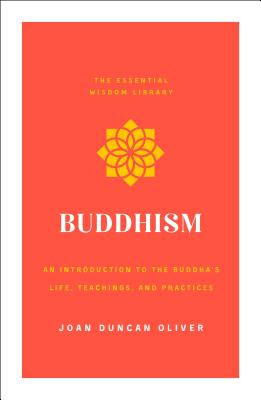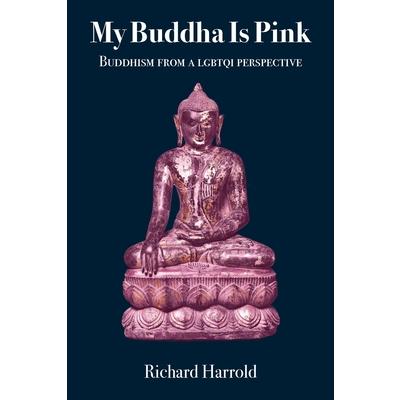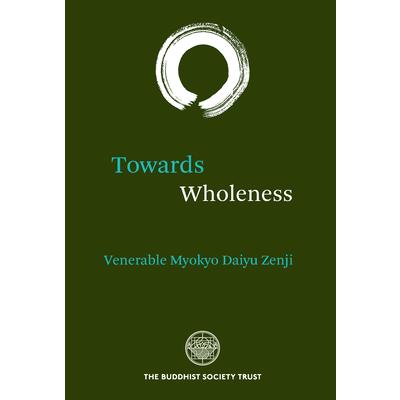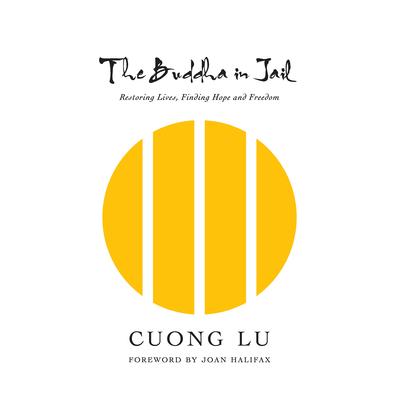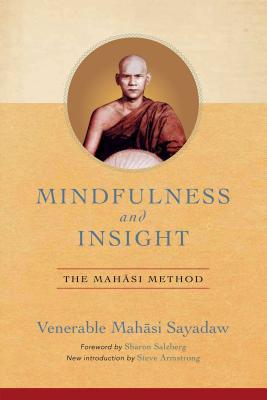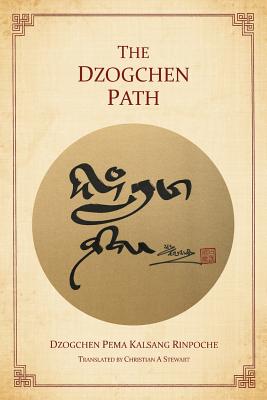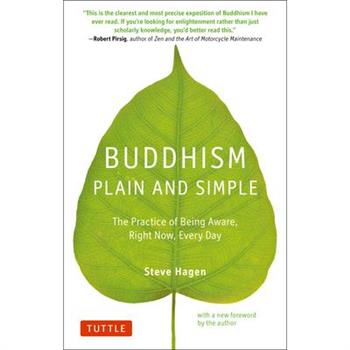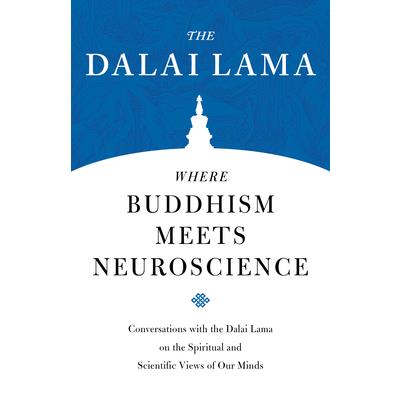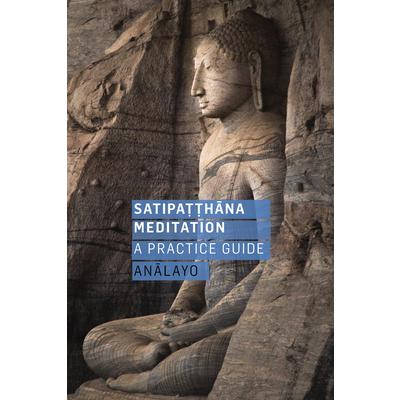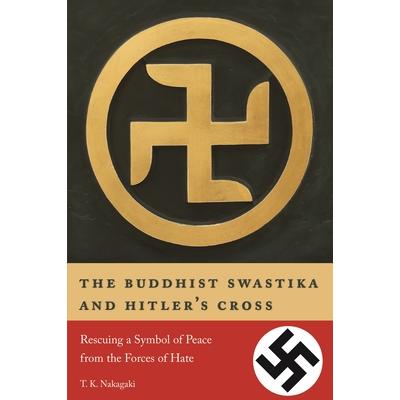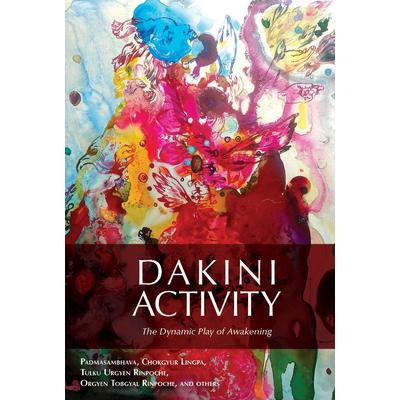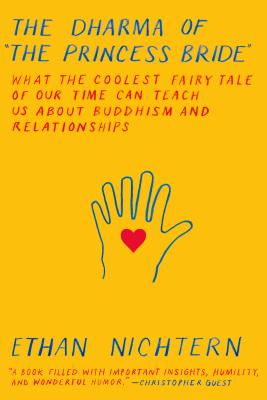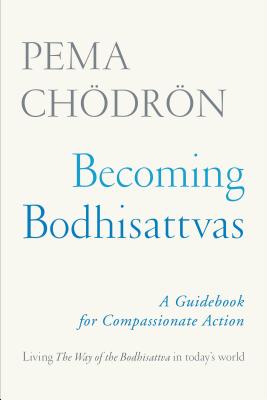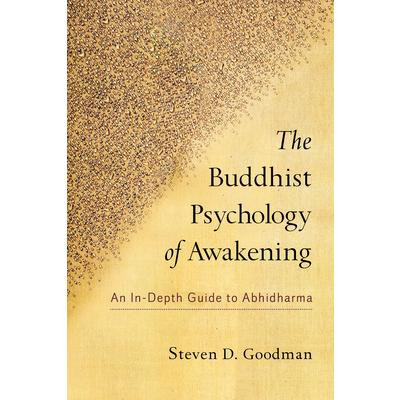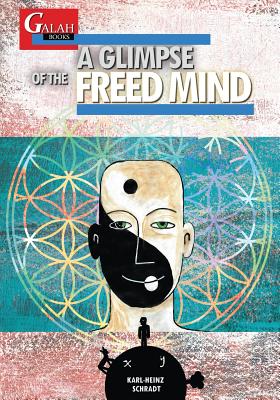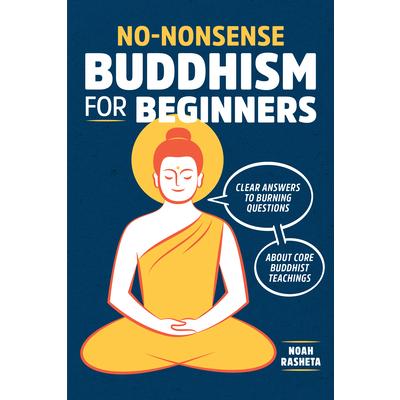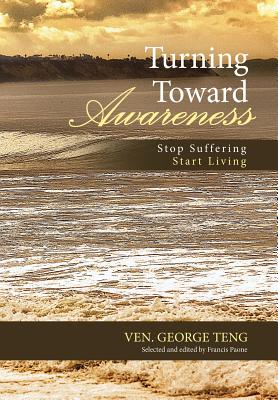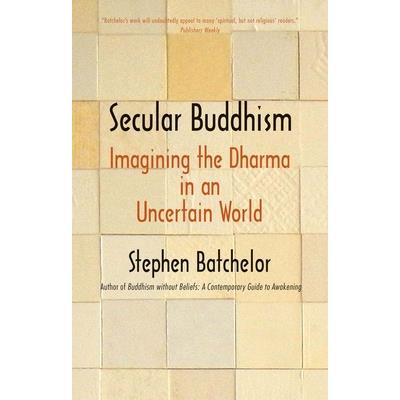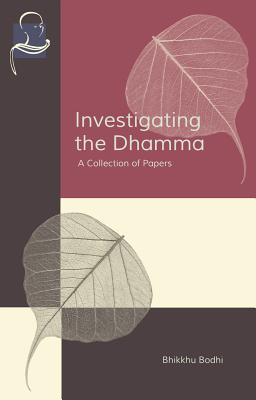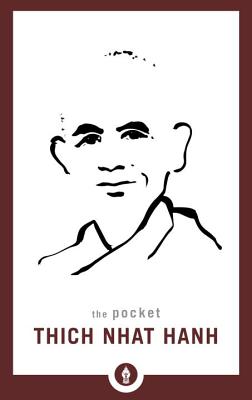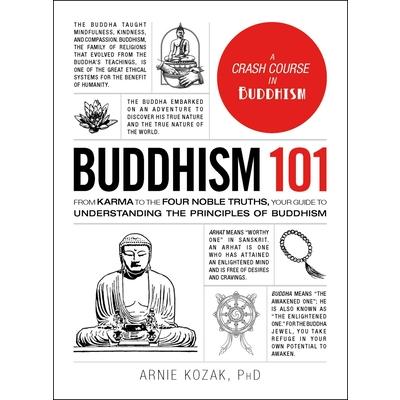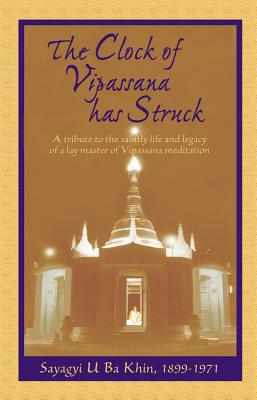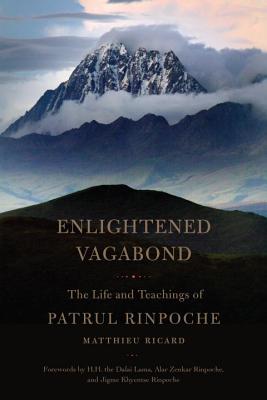Sex and Violence in Tibetan Buddhism,
The death of Sogyal Rinpoche in 2019 unleashed a new torrent of victim revelations, accounting questions and legal rulings that further illuminate the trail of injury and insult he left behind. The imposter guru ended his days as a refugee in Thailand, beyond the reach of police and civil investigations in several countries. First published before his death, this book is now revised and updated with more first-hand testimony of the unresolved aftermath of abuse suffered at his hands by scores of devotees over 30 years. Born in Tibet, Sogyal Lakar fled the Chinese invasion with his family as a child and found refuge in India before showing up in London in the 1970s. His ambition and charisma enabled him to con thousands into believing he was an authentic reincarnation in the Tibetan Buddhist tradition. At his peak, he was the best-known Tibetan holy man after the Dalai Lama, was credited as the author of a best-selling book and even appeared in a Hollywood movie. His Rigpa Fellowship attracted followers across the globe, including celebrities, tycoons and politicians. But, as documented here, behind Sogyal's rise to fame lies a lurid tale of sexual misconduct, physical violence, fabricated credentials and financial irregularities. Based on interviews with victims and eyewitnesses, first-hand experience and detailed research, this book is also about the culture clash that occurs when the feudal norms of old Tibet are na簿vely accepted by spiritual seekers in the West.
Fallout
When eight students wrote a letter accusing Sogyal Rinpoche, author of the best-selling Tibetan Book of Living and Dying, of decades of physical, emotional and sexual abuse, Tahlia Newland set up an online support group for abuse victims and students of his Tibetan Buddhist community, Rigpa. Appalled by the lack of ethics, the group undertook a journey of discovery during which they uncovered the depth of the trauma suffered by victims, and the fundamentalism and cult behaviour at the heart of Rigpa. They learned about destructive cults, trauma and recovery, narcissistic abuse, co-dependency, institutional betrayal, and the methods of mind control used by Rigpa, who had covered up and enabled the abuse for decades.Fallout, Tahlia's memoir of this time, reveals the consequences of spiritual abuse for an ordinary member of an abusive, high-demand religious group and the psychological processing required for healing and cult recovery. Fallout is a cautionary tale for students and potential students of any guru-centred spiritual group. For Buddhist teachers and scholars, it also provides valuable insight into areas of the teachings which can easily be misunderstood and misused. For psychotherapists and counsellors, it's an important case study for anyone working with cult survivors, particularly in a Buddhist context.
Buddhism Conquers Subconsciousness
The book provides the truth of Buddhism history and the basic Buddhism principles, such as the Four Noble Truth and the Noble Eightfold Path, which have been misunderstood for thousands of years due to the misleading transmission of the nonenlightened monks and now have been thoroughly recognized and explained by the enlightened master Th穩ch Thanh Thin with the knowledge inherited from his master, Th穩ch Th繫ng Lc. As an enlightened one, he shares his own practicing methods that focus on capturing and controlling the operation of Consciousness and Subconsciousness, the two factors that have contributed to all the misunderstandings in history and principles and interrupts the path to enlightenment ever since. His methods are very simple yet unique and effective and to be demonstrated by his explanation and evidence in the book.
Buddhism Conquers Subconsciousness
The book provides the truth of Buddhism history and the basic Buddhism principles, such as the Four Noble Truth and the Noble Eightfold Path, which have been misunderstood for thousands of years due to the misleading transmission of the nonenlightened monks and now have been thoroughly recognized and explained by the enlightened master Th穩ch Thanh Thin with the knowledge inherited from his master, Th穩ch Th繫ng Lc. As an enlightened one, he shares his own practicing methods that focus on capturing and controlling the operation of Consciousness and Subconsciousness, the two factors that have contributed to all the misunderstandings in history and principles and interrupts the path to enlightenment ever since. His methods are very simple yet unique and effective and to be demonstrated by his explanation and evidence in the book.
Third Eye Awakening
THIRD EYE AWAKENINGThis book covers the topic of third eye awakening and will teach you to unlock and develop your psychic abilities. Everyone has psychic abilities lying dormant within them, but sadly, very few people ever access these abilities. In order to access these psychic powers such as intuition, clairvoyance, and the ability to view auras, it's essential that you first awaken your third eye. Once your third eye has been awakened and you become truly in tune with your body, these hidden skills and abilities will begin to develop. Inside this book, we will discuss how exactly you can awaken your third eye through a range of strategies, such as chakra balancing and specific meditation exercises. Here Is A Preview Of What You'll Learn About Inside... What Is The Third Eye The Different Psychic Abilities How To Balance Your Chakras How To Become Acquainted With Your Higher Self Meditations For Awakening Your Third Eye Common Myths About Psychic Development How To Further Develop Your Psychic Abilities Much, Much More!
Awake Mind, Open Heart
Twenty-five years ago renowned Tibetan Buddhist meditation master Chogyam Trungpa Rinpoche introduced teachings of the Shambhala warrior tradition-teachings that show how we could live as enlightened citizens and help create an advanced society based on fearlessness and non-aggression. Now Awake Mind, Open Heart makes these teachings accessible to the widest possible audience. Author Cynthia Kneen, who has conducted Shambhala Training workshops for more than twenty years, shows us how to develop personal power through direct, genuine experience and how to cultivate natural bravery, authenticity, and gentleness. Directed especially to readers new to Shambhala Buddhism, she also teaches how to develop genuine dignity by connecting to the strength and wisdom of the world as it is, and how to transform fear into fearlessness. This is an invaluable introduction to these ancient Tibetan teachings.
Yoka Daishi’s Realizing the Way
In this volume, The Buddhist Society presents Yoka Daishi's Realizing the Way, a T'ang Dynasty Chinese text known as Zhang Dao Ge, or Shodōka in Japanese. This 12th century Japanese edition has been translated by the Venerable Myokyo-ni and accompanied throughout by her own commentary on the text. The sixty-seven verses of Yoka Daishi's Song on the Realization of the Way lie at the heart of the Zen approach to Mahayana thought and symbolise the germ of the Buddha-nature inherent in all sentient beings - hidden and dormant, but containing the potential and promise of liberation. The title, which is variously translated, is most commonly known as 'The Song of Enlightenment'. With vivid imagery and striking turns of phrase, these verses weave in and out of the various Mahayana doctrines. Each section of the Song, which The Venerable Myokyo-ni describes as 'a very carefully considered and expounded summary that has the whole of the teaching in it', is accompanied here by her extensive and illuminating commentary.
The Still Point
It is surely a significant manifestation of the permanence of the soul's quest for God that the Western world, at a time when human values, principles, and ideals are being questioned and rejected, has turned to an interest in the age-old practice of the East - the quest for inner peace and tranquility as found in the profoundly moving experience of contemplation after the method of Zen Buddhism. In this deeply sympathetic study, the author compares the principles and the practices of Zen with the traditional concepts, aims, and results of Christian mysticism. His object is, first, ecumenical - to explore the bases of Zen and Christian mysticism, so that Buddhist and Christian can communicate; second, to rethink the basic concepts of Catholic mystical theology in the light of the Zen experience; and last, to encourage more people to contemplative prayer.
Buddhism
A modern guide to the teachings of Buddhism Buddhism: An Introduction to the Buddha's Life, Teachings, and Practices is an indispensable guide to a 2,600-year-old wisdom tradition that has transformed the lives of millions across centuries and around the world. Readers will learn how Siddhartha Gautama became the Buddha, one of the most influential spiritual leaders of all time, and discover how they too can follow his revolutionary methods to attain happiness and inner freedom. Along with accessible overviews of central teachings--the Four Noble Truths, the Eightfold Path, karma, core virtues like kindness and compassion, and more--Buddhism covers such basics as: - the three main Buddhist traditions--Theravada, Mahayana, and Vajrayana--historically and their relevance today- the role of meditation and mindfulness in Buddhist practice- step-by-step instruction in key Buddhist practices Writing in an engaging, approachable style, author Joan Duncan Oliver outlines the fundamentals of Buddhism for every reader, revealing its timeless truths and their relevance for finding peace in uncertain times. A practitioner of Buddhist meditation for forty years, Oliver has written extensively on Buddhist wisdom and its application to daily life. Her practical approach makes Buddhism an essential modern guidebook to an ancient tradition.
My Buddha Is Pink
Just what does the Third Precept mean for the gay Buddhist? Is being gay a consequence for something we did in a "previous life?" What is meditation and how do you get started?My Buddha Is Pink is a collection of essays designed to help gay practitioners follow the Buddha's path without getting lost in dogma. As with other major religions of the world, there are portions of Buddhism that have persisted through the years that can come off as homophobic at worst, or at the minimum, restrictive toward the LGBTQI community. This book seeks to slice through the baggage and hone in on Buddhism's basics to guide the solo practitioner on a skillful course toward a more fulfilling life.Buddhism isn't so much a religion, but rather a philosophy on how to live a life that brings more happiness and nurtures behavior that is harmless toward other living beings. It's not a passive belief system, but one that allows a practitioner to be engaged with the world without being ensnared by the traps that surrounds our daily lives - deceit, self-absorption, and consumerism. It's a doctrine that can help you understand your own greed, hatred, and delusion, which in turn helps you to identify these in others as well, so you can limit contact with them.But more than anything, My Buddha Is Pink is a fun and lighthearted look at being a happy and healthy modern gay Buddhist in an environment where homophobia remains an issue.
Towards Wholeness
The Venerable Myokyo-ni wrote several books that describe Zen practice in an accessible and clear-minded way. She stressed that Zen was part of Buddhism, as all schools were true to the same core principles: "Many schools; one way." Before her travels to Japan, she had undergone Jungian analysis, and spoke of Buddhist practice as a way of transforming the psyche and bending the heart towards compassion and wholeness. Towards Wholeness collects nineteen essays by Venerable Myokyo-ni which explore her thoughts on Zen Buddhism and its place in daily life. It includes her well-known analysis of the Bull-Herding Series, as well as pieces on Jung, meditation, Zen practice and study. Essays such as The Quest for Wholeness, The Need for Transformation and Going Beyond provide further examples of Myokyo-ni's incisive and insightful thinking, always rigorous but often deeply compassionate.
Look and See
Over twenty Buddhist teaching stories are included, with commentaries by the Venerable Myokyo-ni. The stories are collected from various Buddhist sources, but have in common the Buddhist way of facing the trials of life. Stories from the Southern schools, such as 'The Parable of the Poisoned Arrow' are included alongside Northern training stories like 'The Taming of the Harp' and 'The Great Wave.' Each story is followed by the thoughts and observations of the Venerable Myokyo-ni. 'Stories and parables are an integral part of traditional teaching texts. They are of such simplicity that one is inclined to smile at them as rather childish and as of no relevance to our lives today. Yet on closer acquaintance they reveal a profound insight into human nature, expound perennial verities and serve as pointers or guides. They console, succour, direct towards a more conducive attitude and a fuller, more meaningful partaking in life.' -The Venerable Myokyo-ni, from the Introduction to the book
The Buddha in Jail
A Buddhist teacher shares insights into the prisoner's mindset, something with implications for us all, whether or not we are in a conventional jail As a prison chaplain, Cuong Lu discovered that when the men inside allowed themselves to feel their pain--including remorse for committing crimes--knowing and feeling the truth became a source of strength for them. This is a book of fifty-two vignettes--stories and teachings about Lu's six years as a prison chaplain. He found that when the inmates felt listened to, understood and not judged, it transformed their sense of who they are, and as a result changed their attitudes and their behavior. Cuong Lu opens our eyes beyond prejudice to see others--and ourselves--in a larger perspective. When we look at prisoners without judgment, we connect with those we might never know, and with our own basic goodness. The message of The Buddha in Jail is one of redemption. This book is not just about the prisoners. It's about all of us. We're all caught in distorted and limiting ideas of ourselves. We don't believe freedom and happiness are attainable. But when we come to believe in ourselves, we discover the freedom and happiness already within. Cuong Lu shows us that this approach works. It can be applied to all prisons, and also to our own lives. "Read these stories carefully, a few at a time, and apply them to our encounters with those who have acted badly, those we don't particularly like, and ourselves, for all these dialogues are taking place within each of us all the time." -- Roshi Joan Halifax
Mindfulness and Insight
A clear, simple meditation method on practicing mindfulness for insight, which takes us to our goal of liberation, the end of all suffering. Discarding any striving or ambition to attain something, the refined guidance that Mahasi Sayadaw provides in this book will lead practitioners to systematically and gradually purify their minds of attachment, aversion, and delusion and to realize the successive stages of enlightenment, culminating in the attainment of enlightenment (nibbana). Mindfulness and Insight is an excerpt of two key chapters from the comprehensive, authoritative Manual of Insight, which expounds the doctrinal and practical aspects of mindfulness (satipatthana) and the development of insight knowledge (vipassana) up to and including nibbana. In Manual of Insight, Mahasi Sayadaw acknowledged that these two chapters alone offer suitable guidance on our own journey of awakening by realizing path knowledge, fruition knowledge, and nibbana, particularly for those with little or no knowledge of the Pali scriptures. Part 1, "The Development of Mindfulness," offers comprehensive instructions for developing mindfulness based on the Buddha's teachings on the four foundations of mindfulness, as outlined in the highly regarded Discourse on Mindfulness (Satipatthana Sutta). Part 2, "Practical Instructions," provides guidance in both the practices preliminary to undertaking insight meditation and in developing insight knowledge, ranging from initial practices to advanced levels of practice.
Walking Meditation
Walk the path to peace with expert guidance in a unique form of meditation "Take my hand.We will walk.We will enjoy our walkwithout thinking of arriving anywhere.Walk peacefully.Walk happily.Our walk is a peace walk.Our walk is a happiness walk." --Thich Nhat Hanh What if every step you took deepened your connection with all of life, heightening your perception of the infinite wonders of the present moment? With Walking Meditation: Easy Steps to Mindfulness, you will discover an instructional program for a serene spiritual practice that will help you walk with presence and peace of mind, whether in the stillness of nature or on a bustling sidewalk in the city. Just as sitting meditation draws focused attention to the breath, walking meditation centers the practitioner in the aliveness of the present moment through movement. As taught by the esteemed Buddhist master Thich Nhat Hanh and one of his principle students, Nguyen Anh-Huong, Walking Meditation illuminates the central tenets of this powerful art. Now including online access to complementary audio and video guided meditations, this book features progressive instruction in basic mindfulness techniques such as conscious breathing and walking mindfully in nature, then proceeds to methods for meditative walking anywhere and any time--even in busy public spaces. You will also learn: - How to recognize the miracle in simply walking--not as a means to an end, but as the opportunity to touch the fullness of life- Reversing "habit energy" through the union of body and mind- Using walking meditation to work with difficult emotions such as anger and anxiety- Learning to walk with apranihita--joyful and appreciative aimlessness With Walking Meditation, practitioners from every spiritual tradition will find "our home in the here and now, as the long road we all must walk turns to quiet joy."
The Dzogchen Path
Why do we need to train our mind? Before we realise samsaric life to be suffering, when a lama teaches the Dharma, we misunderstand it as a catalogue of misery and inevitability. We get the impression that everything we are interested in, all our wishes and desires, are unacceptable, and what is encouraged is singularly difficult and unachievable. However, when we do recognise our afflictive emotions to be suffering, we can do something to reduce them. Then, we can finally begin to free ourselves from their negative influence and find some real happiness. Thus, in order to accomplish meaningful inner transformation, of course we need to go to a little trouble.One of the most eminent lamas in Tibet, Dzogchen Pema Kalsang Rinpoche is widely recognised as a brilliant scholar and highly realised master of the Great Perfection. In this faithful translation of his teachings on the Sublime Path to Omniscience by Jigme Lingpa, the entire path of the Dzogchen Preliminary Practices is presented in clear and experiential language, for the benefit of both beginners and experienced practitioners alike.
Dogen’s Pure Standards for the Zen Community
Presents a complete, annotated translation of Dogen's writing on Zen monasticism and the spirit of community practice. Dogen (1200-1253) is Japan's greatest Zen master.This is a complete translation of Eihei Shingi, the major writing by the Japanese Zen master Eihei Dogen (1200-1253) on monastic practice and the role of community life in Buddhism. Dogen was the founder of the Soto branch of Japanese Zen, but his teaching was not limited by any particular school of Buddhism. His writings are generally regarded today as a great summit of Japanese Buddhist philosophy, meditation practice, psychology, and poetic insight into the nature of reality.Eihei Shingi contains Dogen's principal guidelines and instructions for everyday life and rituals in the monastic training center he established. Included are a collection of dramatic teaching stories, or koans, on the attitude and responsibilities for practitioners in the community, the only collection of traditional koans with this practical focus.In addition to the translation, the book includes detailed annotation, a substantial introduction, glossaries of Japanese technical terms and persons mentioned, and lineage charts, all providing relevant background in historical and religious context.
Buddhism Plain and Simple
"This is the clearest and most precise exposition of Buddhism I have ever read. If you're looking for enlightenment rather than just scholarly knowledge, you'd better read this." --Robert Pirsig, author of Zen and the Art of Motorcycle Maintenance In Buddhism Plain and Simple, Zen priest and longtime teacher Steve Hagen presents the heart of Buddhist teachings, pared down to its essence and explained in simple, everyday language. This best-selling book is the perfect guide to Buddhism for beginners; the text has served international readers at all levels of study and practice since it was originally published over a decade ago. More than 300,000 copies in various formats have sold to date, and now it's available in this brand new edition with a high-quality binding and paper, as well as elegant decorative illustrations scattered throughout. Practiced by more than 1.2 million Americans and 2-3 million Europeans, Buddhism has become one of the West's largest religions. Whether you're simply interested in learning more about Buddhist philosophy, or hope to begin practicing but don't know where to start, Buddhism Plain and Simple will help you on your way. "This is a book about awareness. Not awareness of something in particular, but awareness itself--being awake, alert and in touch with what is actually happening. It's about examining and exploring the most basic questions of life. It's about relying on the immediate experience of this present moment. It's about freedom of mind. It's not about belief, doctrine, formula, or tradition." --from the Introduction
Start Where You Are
The perennially helpful guide to transforming our pains and difficulties into opportunities for genuine joy and personal growth, from the beloved Buddhist nun and author of When Things Fall Apart We all want to be fearless, joyful, and fully alive. And we all know that it's not so easy. We're bombarded every day with false promises of ways to make our lives better--buy this, go here, eat this, don't do that; the list goes on and on. But Pema Ch繹dr繹n shows that, until we get to the heart of who we are and really make friends with ourselves, everything we do will always be superficial. In this perennial self-help bestseller, Pema offers down-to-earth guidance on how we can go beyond the fleeting attempts to "fix" our pain and, instead, to take our lives as they are as the only path to achieve what we all yearn for most deeply--to embrace rather than deny the difficulties of our lives. These teachings, framed around fifty-nine traditional Tibetan Buddhist maxims, point us directly to our own hearts and minds, such as "Always meditate on whatever provokes resentment," "Be grateful to everyone," and "Don't expect applause." By working with these slogans as everyday meditations, Start Where You Are shows how we can all develop the courage to work with our own inner pain and discover true joy, holistic well-being, and unshakeable confidence.
Where Buddhism Meets Neuroscience
Designed as a conversation between the Dalai Lama and Western neuroscientists, this book takes readers on a journey through opposing fields of thought--showing that they may not be so opposing after all Is the mind an ephemeral side effect of the brain's physical processes? Are there forms of consciousness so subtle that science has not yet identified them? How does consciousness happen? Organized by the Mind and Life Institute, this discussion addresses some of the most troublesome questions that have driven a wedge between Western science and religion. Edited by Zara Houshmand, Robert B. Livingston, and B. Alan Wallace, Where Buddhism Meets Neuroscience is the culmination of meetings between the Dalai Lama and a group of eminent neuroscientists and psychiatrists. The Dalai Lama's incisive, open-minded approach both challenges and offers inspiration to Western scientists. This book was previously published under the title Consciousness at the Crossroads.
Satipatthana Meditation
From the Buddhist meditator and scholar, Bhikkhu Anālayo, this is a thorough-going guide to the early Buddhist teachings on Satipatthana, the foundations of mindfulness, following on from his two best-selling books, Satipatthana: The Direct Path to Realization and Perspectives on Satipatthana. With mindfulness being so widely taught, there is a need for a clear-sighted and experience-based guide. Analayo provides it.
The Buddhist Swastika and Hitler's Cross
A remarkable cross-cultural history that rescues the swastika, an ancient Buddhist symbol, from its deployment by the forces of hate.
Dakini Activity
The source of activity is the dakini and there are five kinds of activities, peaceful, increasing, magnetizing, subjugating, and the supreme activity. The primary way to perfect these is through dakini practices, and among dakinis, there are the wisdom dakinis, in space, and worldly dakinis. These vast collections of practices can be condensed into those of the three roots, lama, yidam, and dakini. The source of blessings is the lama, the source of accomplishment is the yidam, and the source of activities is the dakinis. The one who carries out the activities for the lama and the yidam is the dakini, in other words, the virtue of blessings and accomplishment is the activity, which is the dakini. Pema Khandro practice connects us with magnetizing practices. And why do we do magnetizing practice? The real essence that needs to be magnetized is not superficial things; it is to magnetize realization of the view, to magnetize the teachings on how to realize the view, to magnetize the meditation and the conduct.
The Dharma of the Princess Bride
An engagingly contemporary approach to Buddhism--through the lens of an iconic film and its memorable characters Humorous yet spiritually rigorous in the tradition of Zen and the Art of Motorcycle Maintenance and The Tao of Pooh, drawing from pop culture and from personal experience, The Dharma of "The Princess Bride" teaches us how to understand and navigate our most important personal relationships from a twenty-first-century Buddhist perspective. Friendship. Romance. Family. These are the three areas Ethan Nichtern delves into, taking as departure points the indelible characters from Rob Reiner's perennially popular film--Westley, Fezzik, Vizzini, Count Rugen, Princess Buttercup, and others--as he also draws lessons from his own life and his work as a meditation teacher. Nichtern devotes the first section of the book to exploring the dynamics of friendship. Why do people become friends? What can we learn from the sufferings of Inigo Montoya and Fezzik? Next, he leads us through all the phases of illusion and disillusion we encounter in our romantic pursuits, providing a healthy dose of lightheartedness along the way by sharing his own Princess Buttercup List and the vicissitudes of his dating life as he ponders how we idealize and objectify romantic love. Finally, Nichtern draws upon the demands of his own family history and the film's character the Grandson to explore the dynamics of "the last frontier of awakening," a reference to his teacher Chogyam Trungpa's claim that it's possible to be enlightened everywhere except around your family. With The Dharma of "The Princess Bride" in hand, we can set out on the path to contemporary Buddhist enlightenment with the most important relationships in our lives.
Becoming Bodhisattvas
Best-selling American Buddhist nun Pema Ch繹dr繹n presents a friendly and encouraging guide to spiritual practice for all those who want to take up the path of the bodhisattva--one who aspires to live life with courage, generosity, patience, fearlessness, and compassion. The Way of the Bodhisattva has long been treasured as an indispensable guide to enlightened living, offering a window into the greatest potential within us all. Written in the eighth century by the scholar and saint Shantideva, it presents a comprehensive view of the Mahayana Buddhist tradition's highest ideal--to commit oneself to the life of a bodhisattva warrior, a person who is wholeheartedly dedicated to the freedom and common good of all beings. And it has inspired many of the tradition's greatest teachers, providing a remarkable source of insight on the means by which we may heal ourselves and our troubled world. These essential teachings present the core of the Buddhist path, from cultivating deep-seated confidence to infusing one's life with selflessness, joyfulness, kindness, and compassion. Pema Ch繹dr繹n here invites you to journey more deeply into this liberating way of life, presenting Shantideva's text verse-by-verse and offering both illuminating stories and practical exercises to enrich the text and bring its timeless teachings to life in our world today. Previously published under the title No Time to Lose.
The Buddhist Psychology of Awakening
A modern introduction to traditional Buddhist psychology This practical overview of Buddhist psychology outlines step-by-step methods for examining the source of our habitual tendencies and hangups. In order to truly free ourselves from perpetuating patterns of suffering, the Buddha offered a clear system for understanding our psychological dispositions, processes, fixations, and challenges--a system known as the Abhidharma. This tradition has been studied by Buddhists for over two millennia. Professor Steven Goodman has taught on the Abhidharma in both universities and Buddhist retreats for over twenty years, making these traditional teachings accessible for a modern readership for the first time. Goodman explains how becoming aware of our mental patterns can liberate us from cycles of emotional pain and shows how the Abhidharma can be applied to meditation practice through exercises of observation and reflection. This is the go-to manual for anyone interested in the world of Buddhist psychology.
The Places That Scare You
"A lively and accessible take on ancient techniques for transforming terror and pain into joy and compassion," from beloved Buddhist teacher Pema Ch繹dr繹n (O, The Oprah Magazine) Lifelong guidance for changing the way we relate to the scary and difficult moments of our lives--showing us how we can use our difficulties and fears as a way to soften our hearts and open us to greater kindness We always have a choice in how we react to the circumstances of our lives. We can let them harden us and make us increasingly resentful and afraid, or we can let them soften us and allow our inherent human kindness to shine through. In The Places That Scare You, Pema Ch繹dr繹n provides essential tools for dealing with the many difficulties that life throws our way, teaching us how to awaken our basic human goodness and connect deeply with others--to accept ourselves and everything around us complete with faults and imperfections. Drawing from the core teachings of Buddhism, she shows the strength that comes from staying in touch with what's happening in our lives right now and helps us unmask the ways in which our egos cause us to resist life as it is. If we go to the places that scare us, Pema suggests, we just might find the boundless life we've always dreamed of.
A Glimpse of the Freed Mind
A Glimpse of the Freed Mind - by Karl-Heinz Schradt'A Glimpse of the Awakened' uses pictures mixed with words to make the invisible visible. It is the work of Karl-Heinz Schradt, a Teacher and Mental Health Professional with over twenty years of Clinical Experience working with people to overcome adversity. The subject of Enlightenment or Awakening is one that either is rejected as mumbo-jumbo, is shrouded in mystery, or is used as another 'must have' item that eludes us. By engaging the reader in simple, but meaningful pictures and easy-to-understand text; we engage the parts of our brain which are concerned with creative and symbolic thinking. We are moved beyond the limitations of the 'Everyday Mind' that is rational and inflexible, and given insights into what could lie beyond it - the 'Freed Mind'.Informed by, inspired by and drawn from the many philosophies of Eastern Traditions such as Buddhism, Hinduism and Wu Wei; and many Western Writers and Philosophers, 'A Glimpse of the Freed Mind' is designed to inspire the spirit of inquiry - 'How do I go further into the Infinite?'With over 80 pages of vibrant and thought-provoking artwork, this book is an accessible introduction to the central concepts of following a Spiritual Path towards greater emotional stability, personal calm and inner gratitude.
No-nonsense Buddhism for Beginners
Get on the path to zen bliss-an essential beginner's guide to Buddhism.How is an awakening different from enlightenment? Can agnostics and atheists be Buddhist? Am I supposed to stop thinking when I meditate? In No-Nonsense Buddhism for Beginners, renowned Buddhism teacher and host of the popular Secular Buddhism podcast, Noah Rasheta, delivers an easily accessible introduction to the teachings of Buddhism that answers these common questions and many more. With No-Nonsense Buddhism for Beginners you'll gain a fundamental understanding of Buddhism and how to apply the philosophies in your everyday life, through: A simple 4-part structure addressing the different aspects of Buddhism-the Buddha, key Buddhist concepts, the Buddha's teachings, and current Buddhist practicesStraightforward Q&A's that simplify the vital concepts of Buddhism into easy-to-understand ideas "Everyday Buddhism" Sidebars that make Buddhism less abstract by offering down-to-earth examples from everyday lifePresented in a simple, conversational style, the information and guidance in No-Nonsense Buddhism for Beginners provides the groundwork that is necessary for building or continuing your own Buddhist practice.
Turning Toward Awareness
Turning Toward Awareness posthumously shares wisdom from a western monk ordained in the Tibetan Buddhist tradition. Written in 1974, Ven. George Teng's incisive writing and unique insights into the workings of the mind still provide an excellent foundation for spiritual practice. Buddhists as well as those who follow other faith traditions will find the author's thoughtful reflections inspiring. Even those without any faith tradition will benefit from his presentations on developing a meaningful life that brings happiness in the present and hope for the future. The author shows how human growth becomes arrested and dysfunctional when our awareness is misguided by distorted beliefs. His work sheds light on the ways we try to protect ourselves, such as hiding our ignorance because we feel it is shameful; reacting to fear with cowardice; and embracing weakness as a lifestyle to gain others' energy and attention. His wisdom helps us become aware that our unhealthy mental habits are obscuring our innate nature of wisdom, compassion, and power, which have the potential to manifest in every moment through our intelligence, love, and creativity. Turning Toward Awareness will help readers stop the suffering arising from wrong views and start living a life of true happiness.
Turning Toward Awareness
Turning Toward Awareness posthumously shares wisdom from a western monk ordained in the Tibetan Buddhist tradition. Written in 1974, Ven. George Teng's incisive writing and unique insights into the workings of the mind still provide an excellent foundation for spiritual practice. Buddhists as well as those who follow other faith traditions will find the author's thoughtful reflections inspiring. Even those without any faith tradition will benefit from his presentations on developing a meaningful life that brings happiness in the present and hope for the future. The author shows how human growth becomes arrested and dysfunctional when our awareness is misguided by distorted beliefs. His work sheds light on the ways we try to protect ourselves, such as hiding our ignorance because we feel it is shameful; reacting to fear with cowardice; and embracing weakness as a lifestyle to gain others' energy and attention. His wisdom helps us become aware that our unhealthy mental habits are obscuring our innate nature of wisdom, compassion, and power, which have the potential to manifest in every moment through our intelligence, love, and creativity. Turning Toward Awareness will help readers stop the suffering arising from wrong views and start living a life of true happiness.
Secular Buddhism
An essential collection of Stephen Batchelor's most probing and important work on secular Buddhism As the practice of mindfulness permeates mainstream Western culture, more and more people are engaging in a traditional form of Buddhist meditation. However, many of these people have little interest in the religious aspects of Buddhism, and the practice occurs within secular contexts such as hospitals, schools, and the workplace. Is it possible to recover from the Buddhist teachings a vision of human flourishing that is secular rather than religious without compromising the integrity of the tradition? Is there an ethical framework that can underpin and contextualize these practices in a rapidly changing world? In this collected volume of Stephen Batchelor's writings on these themes, the author explores the complex implications of Buddhism's secularization. Ranging widely--from reincarnation, religious belief, and agnosticism to the role of the arts in Buddhist practice--he offers a detailed picture of contemporary Buddhism and its attempt to find a voice in the modern world.
Confucius, the Analects
The foremost American researcher of Confucius as a religious and spiritual figure explains the Analects' universal wisdom for our own time, guiding us on the "path of the sage" or "Way of Heaven"-a journey of reason, peace and understanding.
Directly Actualize Buddhahood
The fourth book in a series by Miao Tsan, Directly Actualize Buddhahood presents the universal path of wisdom and light in the context of religion. Religion is the container of ancient knowledge; it constitutes the understanding of life's fulfillment. However, as this knowledge was been passed down through generations, its essence and value have been contaminated across a spectrum ranging from prejudiced disbelief to blind faith. Understanding our beliefs is an important step towards enlightenment, because what we believe determines what we will do and create, and the situations we will inevitably encounter. Amid the eternally unfolding process of life, a most important lesson is to discover which kind of belief will lead us to light. To complete this lesson, we must first understand the meaning of life. This is not a meaning we define for ourselves, however. The meaning of life is truth. Venerable Master Miao Tsan attempts to guide each seeker toward a deeper understanding of the source and essential nature of our present situation, so that inner change can occur at the fundamental level, we can overcome our self-imposed limitations and create a better life.
Investigating the Dhamma
This book brings together eight essays of Bhikkhu Bodhi, five of which were earlier published in academic journals and volumes, and three not published before. Most of the essays are critical responses to various modern interpretations of the Dhamma that the author considers to be at odds with the Buddha's teachings, in particular as transmitted and interpreted by the Theravada school of Buddhism. The other essays are in depth discussions of important Buddhist doctrinal terms.
An Introduction to Swaminarayan Hindu Theology
Since its inception over two hundred years ago, Swaminarayan Hinduism has flourished into a transnational movement described as one of the fastest growing Hindu groups in the world. Despite being one of the largest and most visible Hindu traditions both in India and the West, surprisingly little is known about what the Swaminarayan fellowship believes. An Introduction to Swaminarayan Hindu Theology provides a comprehensive doctrinal account of the Swaminarayan tradition's belief system, drawing on its rich corpus of theological literature, including the teachings of Swaminarayan himself and classical commentaries on canonical Vedāntic texts. Part I delineates the sources and tools of Swaminarayan Hindu theology, while Part II systematically expounds upon its distinctive five eternal entities - Parabrahman, Akṣarabrahman, māyā, īśvara and jīva - and mukti (spiritual liberation). In presenting these key themes theologically and lucidly, Swami Paramtattvadas makes the Swaminarayan Hindu belief system intelligible to scholars, students and serious readers.
Dr Ambedkar and the Revival of Buddhism
One of the most far-reaching of Sangharakshita's contributions to modern Buddhism was giving shape to the Buddhist conversion movement begun by the great Indian statesman and reformer, Dr. B.R. Ambedkar. In 1956, along with hundreds of thousands of his followers, Ambedkar renounced the Hindu caste system--according to which they were condemned to be "untouchable"--and converted to Buddhism, thus beginning a new life.The first part of this volume tells the story of how Ambedkar overcame the suffering and struggle of his early years to become the shaper of the Indian constitution and the leader of his people to a new life; also how, following Ambedkar's untimely death, Sangharakshita took on the challenge of teaching Buddhism to the new community of Buddhists.The second part is a collection of thirty-six edited talks, many published here for the first time, from Sangharakshita's tour of the Buddhist communities in India in 1981-82.Sangharakshita is the founder and principal teacher of Triratna, a worldwide Buddhist movement. With teaching experience spanning sixty years, he is the author of over forty books.
Awakening Loving-Kindness
Inspiration and encouragement for cultivating kindness--by embracing the joy, suffering, confusion, and brilliance of our everyday lives--from the author of When Things Fall Apart Do you want to be a more compassionate person, confident and unafraid to love yourself and the world around you unconditionally, but aren't sure how? We often look far and wide for guidance to become better people, as though the answers were somewhere out there. But Pema Ch繹dr繹n suggests that the best and most direct teacher for awakening loving-kindness is in fact your very own life. Based on talks given during a one-month meditation retreat at Gampo Abbey, where Pema lives and teaches, her teachings here focus on learning how to see the events of our lives as the perfect material for learning to love ourselves and our world playfully and wholeheartedly--and to live in our skin fearlessly, without aggression, harshness, or shame. This is instruction for embarking on the greatest adventure of all, to come alive to your inherent human kindness. "Perhaps what makes Pema's message resonate so strongly with people, no matter what their religion or spiritual path, is its universality." --O, The Oprah Magazine
The Pocket Thich Nhat Hanh
A treasury of writings and teachings from the beloved Zen teacher Thich Nhat Hanh. Since Thich Nhat Hanh's exile from his native Vietnam in 1966, this Zen Buddhist monk has gone on to become one of the most influential and beloved spiritual masters of our age. The seeming simplicity of his words belies the power of this teaching to touch the heart and mind and to inspire spiritual practice. These selections, taken from his many published works, together make up a concise introduction to all his major themes and distill his teachings on the transformation of individuals, relationships, and society. This book is part of the Shambhala Pocket Library series. The Shambhala Pocket Library is a collection of short, portable teachings from notable figures across religious traditions and classic texts. The covers in this series are rendered by Colorado artist Robert Spellman. The books in this collection distill the wisdom and heart of the work Shambhala Publications has published over 50 years into a compact format that is collectible, reader-friendly, and applicable to everyday life.
Waking, Dreaming, Being
A renowned philosopher of the mind, also known for his groundbreaking work on Buddhism and cognitive science, Evan Thompson combines the latest neuroscience research on sleep, dreaming, and meditation with Indian and Western philosophy of mind, casting new light on the self and its relation to the brain. Thompson shows how the self is a changing process, not a static thing. When we are awake we identify with our body, but if we let our mind wander or daydream, we project a mentally imagined self into the remembered past or anticipated future. As we fall asleep, the impression of being a bounded self distinct from the world dissolves, but the self reappears in the dream state. If we have a lucid dream, we no longer identify only with the self within the dream. Our sense of self now includes our dreaming self, the "I" as dreamer. Finally, as we meditate--either in the waking state or in a lucid dream--we can observe whatever images or thoughts arise and how we tend to identify with them as "me." We can also experience sheer awareness itself, distinct from the changing contents that make up our image of the self. Contemplative traditions say that we can learn to let go of the self, so that when we die we can witness its dissolution with equanimity. Thompson weaves together neuroscience, philosophy, and personal narrative to depict these transformations, adding uncommon depth to life's profound questions. Contemplative experience comes to illuminate scientific findings, and scientific evidence enriches the vast knowledge acquired by contemplatives.
Buddhism 101
Learn everything you need to know about Buddhism in this clear and straightforward new guide. Buddhism was founded thousands of years ago, and has inspired millions of people with its peaceful teachings. Buddhism 101 highlights and explains the central concepts of Buddhism to the modern reader, with information on mindfulness, karma, The Four Noble Truths, the Middle Way, and more. Whether you're just looking to understand Buddhism or explore the philosophy in your own life and own journey to Enlightenment, this book gives you everything you need to know!
The Clock of Vipassana Has Struck
This collection brings the writings and teachings of Sayagyi U Ba Khin--the teacher of S. N. Goenka--together under one cover, with biographical information and a commentary by Goenka. The story of U Ba Khin and his teaching of the Dhamma is set in context through an extensive interview with S. N. Goenka, conducted by Pierluigi Confalonieri, who also edited this tribute. It was published to commemorate the centenary of Sayagyi's birth.
Enlightened Vagabond
Colorful stories about and profound teachings of Patrul Rinpoche, one of the most impactful teachers and thinkers in the Tibetan tradition from the nineteenth century. The life and teachings of the wandering yogi Patrul Rinpoche--a highly revered Buddhist master and scholar of nineteenth-century Tibet--come alive in true stories gathered and translated by the French Buddhist monk Matthieu Ricard over more than thirty years, based on the oral accounts of great contemporary teachers as well as written sources. Patrul's life story reveals the nature of a highly realized being as he transmits the Dharma in everything he does, teaching both simple nomads and great lamas in ways that are often unconventional and even humorous, but always with uncompromising authenticity.
The Dharma of Dogs
We spend countless hours training our dogs, but how often do we consider what they have to teach us? "Our canine companions aren't just our best friends," explains Tami Simon. "Sometimes they can also be carriers of a special medicine and the wisdom lessons we most need." The Dharma of Dogs shares the reflections of spiritual teachers and writers who have found a source of deep truth and practical wisdom beneath the furry surface of our four-legged friends.For anyone who loves dogs--and who has learned and grown through this special relationship--these 31 essays offer humor, solace, inspiration, and insight into the life lessons our dogs make available to us, exploring such themes as unconditional love, connecting with nature, facing our fears, and much more. Don't forget to add this inspirational book to your list of gifts for dog lovers this year.Edited by Tami Simon, The Dharma of Dogs includes contributions by Alice Walker, Eckhart Tolle, Pam Houston, Mark Nepo, Roshi Joan Halifax, Adyashanti, Julie Barton, angel Kyodo williams, JP Sears, Lama Surya Das, Diane Musho Hamilton, Allan Lokos, Andrew Holecek, Bonnie Myotai Treace, Chris Grosso, Geneen Roth, Jeri Parker, Joan Ranquet, Lama Tsomo, Laura Pritchett, Mirabai Starr, Sarah C. Beasley, Stuart Davis, Susan Martin, Susanna Weiss, and His Eminence the 25th Tsem Rinpoche.Portion of proceeds donated to the National Mill Dog Rescue. milldogrescue.org.




